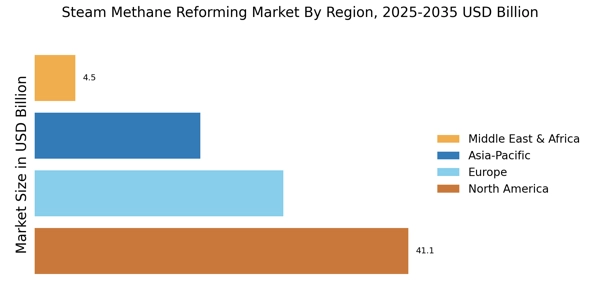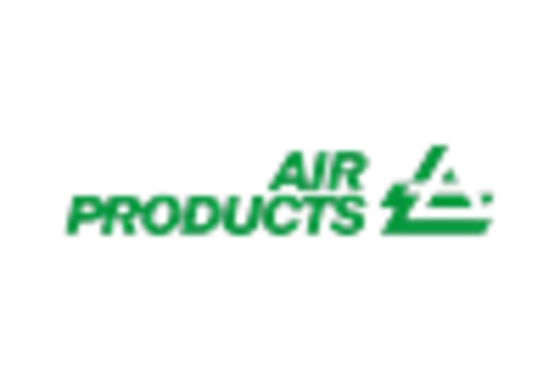Advancements in Reforming Technologies
Technological advancements in steam methane reforming processes are significantly influencing the Steam Methane Reforming Market. Innovations aimed at improving efficiency, reducing costs, and minimizing emissions are becoming increasingly prevalent. For instance, the development of advanced catalysts and process optimization techniques can enhance hydrogen yield while lowering energy consumption. These advancements not only improve the economic viability of steam methane reforming but also align with environmental goals. As a result, the Steam Methane Reforming Market is expected to experience growth driven by these technological improvements, enabling companies to meet the rising demand for hydrogen in a more sustainable manner.
Integration of Renewable Energy Sources
The integration of renewable energy sources into the Steam Methane Reforming Market is becoming more prevalent. As the energy landscape evolves, the coupling of renewable energy with steam methane reforming processes is seen as a viable strategy to enhance efficiency and reduce carbon footprints. For instance, using excess renewable energy to power the reforming process can lead to lower operational costs and improved sustainability. This trend is likely to drive innovation within the Steam Methane Reforming Market, as companies explore hybrid systems that leverage both traditional and renewable energy sources, potentially increasing market share and competitiveness.
Regulatory Support for Hydrogen Economy
Regulatory frameworks supporting the hydrogen economy are emerging as a key driver for the Steam Methane Reforming Market. Governments are implementing policies that promote hydrogen production and utilization, recognizing its potential to decarbonize various sectors. For example, the European Union has set ambitious targets for hydrogen production, aiming for 10 million tons of renewable hydrogen by 2030. Such initiatives not only provide financial incentives but also create a favorable environment for investments in steam methane reforming technologies. This regulatory support is likely to catalyze growth within the Steam Methane Reforming Market, encouraging companies to innovate and expand their operations.
Rising Industrial Applications of Hydrogen
The Steam Methane Reforming Market is witnessing an increase in industrial applications for hydrogen. Industries such as petrochemicals, refining, and ammonia production are increasingly relying on hydrogen as a feedstock. The demand for hydrogen in these sectors is projected to grow, with estimates suggesting that hydrogen consumption in the chemical industry could reach 60 million tons by 2025. This rising industrial demand is driving investments in steam methane reforming technologies, as companies seek to secure reliable hydrogen supplies. Consequently, the Steam Methane Reforming Market is likely to expand, catering to the evolving needs of various industrial sectors.
Increasing Demand for Clean Energy Solutions
The Steam Methane Reforming Market is experiencing a notable surge in demand for clean energy solutions. As nations strive to meet their climate goals, the transition towards hydrogen as a clean fuel source is becoming increasingly critical. The International Energy Agency indicates that hydrogen production could reach 180 million tons by 2030, with a significant portion derived from steam methane reforming. This process not only provides a pathway for cleaner energy but also aligns with the global push for reducing carbon emissions. Consequently, the Steam Methane Reforming Market is poised to benefit from this growing demand, as industries seek sustainable alternatives to fossil fuels.


















Leave a Comment